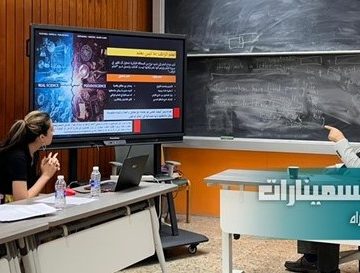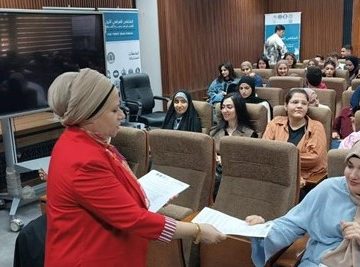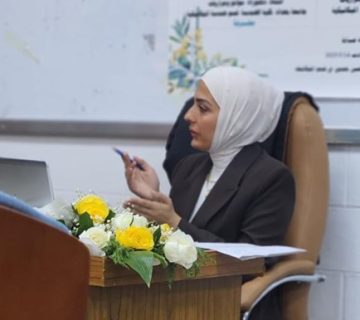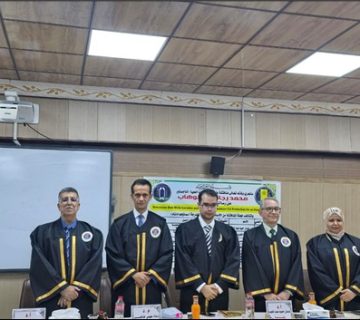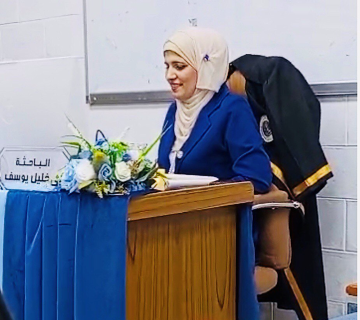The College of Engineering at the University of Baghdad hosted the public defense of the doctoral dissertation submitted by Zahraa Abdulsalam Subaih, a PhD candidate in the Department of Architecture, on Tuesday, April 29, 2025, in Dr. Mohamed Makiya Hall. The dissertation is titled:
“Rejuvenating the Traditional Residential Fabric in Historic City Centers”, and was supervised by Prof. Dr. Ghada Mousa Razouqi.
Dissertation Overview:
The research investigates the potential of rejuvenation strategies to revitalize and reactivate the traditional urban fabric—especially where residential use remains active. The study identifies a core research problem:
“A lack of sufficient knowledge regarding the potential and mechanisms of rejuvenation strategies in reviving deteriorating urban fabrics, particularly traditional residential areas in historic city centers.”
Research Objectives:
- To provide insight into the potentials of rejuvenation as a strategy to inject new life and energy into the traditional urban fabric.
- To present practical mechanisms that can implement rejuvenation and halt urban deterioration.
Methodology:
The dissertation adopts a comparative analytical approach, drawing parallels between medicine and architecture/urban design to explore rejuvenation concepts. The core hypothesis posits that rejuvenation strategies, when analogized with medical rejuvenation processes, can effectively stop deterioration and revive the life of traditional residential fabrics.
Key Innovations and Framework:
The study develops an analogous model by adapting medical rejuvenation techniques:
- Acupuncture
- Stem Cell Transplantation
- Psychotherapy (including space activation and the addition of functional uses)
These were translated into urban strategies using indicators recognized in urban studies. A matrix-based model was constructed using components of the traditional urban fabric, offering a programmable system for rejuvenating deteriorated areas.
Application and Case Study:
The model was applied to a section of Historic Rusafa in Baghdad, specifically:
- Al-Bab Al-Wastani landmark
- The historic axis connecting it to the river
- Surrounding neighborhoods: Abu Dudu, Faraj Allah, and Tatran (modern districts 123, 125, 127, 129)
Using the Traffic Lights Theory Diagnosis, the model assessed levels of deterioration and implemented interventions such as:
- Repopulating vacant buildings
- Programming rejuvenation interventions for surrounding areas
- Acupuncture-based stimulation of Al-Bab Al-Wastani and its surroundings
- Introducing green areas, infrastructure services, and socially activating functions to meet residents’ needs, enhance place attachment, and encourage return migration
Dissertation Committee:
- Prof. Dr. Inaam Mohammed Amin – Chair (University of Baghdad, Urban Design)
- Asst. Prof. Dr. Abdulhussein Abdulali Al-Askari – Member (University of Baghdad, Philosophy of Architecture)
- Asst. Prof. Dr. Dhurgham Mazher Kareem – Member (University of Baghdad, Urban Design)
- Asst. Prof. Dr. Kameela Ahmed Abdul Sattar – Member (Al-Mustansiriyah University, Urban Design)
- Asst. Prof. Dr. Fawzia Arhim Hussein – Member (University of Baghdad, Architectural Theory)
- Prof. Dr. Ghada Mousa Razouqi – Supervisor (University of Baghdad, Architectural Theory)
Conclusion:
Following an in-depth academic discussion and the researcher’s successful defense, the committee awarded Zahraa Abdulsalam Subaih the PhD in Architecture.
Best wishes to the researcher, the supervisor, the esteemed committee members, and the Department of Architecture for continued success.



